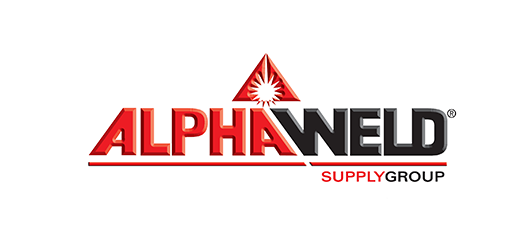Shop Now
- Welding Consumables
- Welding Torches & Torch Spares
- Welding Machines
- Plasma & Cutting Machines
- Welding Machine Spare Parts & Accessories
- Welding Fume Extraction Equipment
- Gas Welding Equipment
- Welding Abrasives
-
Welding Safety Equipment
- Welding Helmets
-
Welding Helmet Spares
- Speedglas Spares
- Betaweld Spares
- Cigweld Spare Parts & Accessories
- Flip Front Helmet Spares
- Jackson Spares & Accessories
- Lincoln Electric Spare Parts & Accessories
- Miller Spares & Accessories
- RPB Spares
- Servore Spares
- Unimig Spare Parts & Accessories
- Weldclass Spares & Accessories
- Miscellaneous Helmet Lens
- Welding Gloves
- Protective Workwear
- Welding Blankets
- Welding Screens & Curtains
- Ear Protection
- Eye Protection
- Face Protection
- Hand Protection
- Head Protection
- Respiratory Protection
- Sun Protection
- Hydration Products
- Fire Blankets
- Prestart Books
- Safety Signage
- Safety Tags
- Hazard Tape
- Welding Accessories
- Pipe Welding Equipment
-
Cutting & Drilling
- Bandsaws
- Bandsaw Blades
- Bandsaw Accessories
- Coldsaws
- Core Drills & Accessories
- Cutting & Milling Blades
- Diamond Blades
- Drill Bits
- Holesaws
- Magnetic Base Drills
- Metal Working Lubricants
- Pipe Bevelling
- Pipe Cutting Equipment
- Pipe Tee Pulling Kits
- Pipe Threading Machines
- Plasma Table Water Additives
- Punching Machines
- Welding Merchandise
- Gift Cards
- Clearances
-
Hire
- Hire Equipment
- Hire Heating Equipment
- Hire Degausing Equipment
- Hire Welding Automation
- Hire a Welding Positioner
- Hire a Turning Roller
- Hire a Diesel Welder
- Hire a Wirefeeder
- Hire a Multi-Process Welder
- Hire Accessories
- Hire a MIG Welder
- Hire a TIG Welder
- Hire a Stick Welder
- Hire a Plasma Cutter
- Hire a Weld Cleaner
- Hire a Stud Welder
Is Gas MIG Welding Better Than Gasless?
When it comes to MIG welding, one of the most common questions among beginners and even seasoned welders is whether gas MIG welding is better than gasless. Both methods have their advantages, and the best choice often depends on the specific job, location, materials, and user experience.
In this article, we’ll break down the differences between the two, helping you decide which is best for your welding needs.
Understanding the Basics
What is Gas MIG Welding?
Gas MIG (Metal Inert Gas) welding uses a shielding gas - commonly argon or a mix of argon and CO² - to protect the weld pool from atmospheric contamination. This method typically provides clean, spatter-free welds.
What is Gasless MIG Welding?
Gasless MIG welding, also known as flux-cored arc welding (FCAW), uses a tubular wire filled with flux instead of relying on an external shielding gas. When heated, the flux forms a protective shield over the weld area.
Pros and Cons: A Side-by-Side Comparison
Gas MIG Welding
Pros:
-
Produces cleaner welds with less spatter
-
Better for welding thinner metals
-
Ideal for indoor use or environments with little wind
-
Typically easier to see the weld pool
Cons:
-
Requires a gas cylinder, regulator, and proper storage
-
Less portable due to added equipment
-
Shielding gas can be disrupted by wind
Gasless MIG Welding
Pros:
-
More portable - no gas tank required
-
Works well in outdoor or windy conditions
-
Generally offers deeper penetration on thicker materials
-
Often more forgiving on dirty or rusty surfaces
Cons:
-
More spatter and slag cleanup required
-
Less visually clean welds
-
Can be trickier on thin sheet metal
Best Applications for Each Type
When to Use Gas MIG Welding
Gas MIG welding is often preferred for:
-
Automotive repairs
-
Fabrication work
-
Indoor workshops
-
Projects requiring clean aesthetics
When to Use Gasless MIG Welding
Gasless MIG welding is ideal for:
-
Outdoor welding (construction, farm work)
-
Thicker materials and structural steel
-
On-the-go repairs where portability matters
Cost Considerations
While gasless welding machines are generally cheaper and require less setup, the flux-cored wire can be more expensive than solid wire used in gas MIG. Additionally, running costs for gas MIG include gas refills, which can add up over time.
Skill Level and Learning Curve
For beginners, gas MIG welding is often considered easier to learn due to its clean arc and clearer visibility. However, gasless welding teaches valuable skills for working in rougher environments and managing slag.
Final Verdict: Which is Better?
There’s no one-size-fits-all answer. If you’re working indoors on light to medium gauge steel and want neat, precise welds, gas MIG welding is often the better option. If you need portability, plan to weld outside, or work with heavier materials, gasless MIG welding offers distinct advantages.
Conclusion
In the end, both gas and gasless MIG welding have their place in a welder’s toolkit. Understanding their strengths and limitations will help you choose the right method for the job - and possibly invest in a dual-purpose MIG machine to get the best of both worlds.
If you need further guidance on choosing between gas or gasless MIG welding, Alphaweld is here for you. To speak with our team of experts, give us a call today on (08) 9456 8000 or contact us online.


